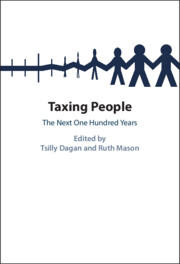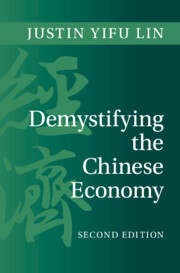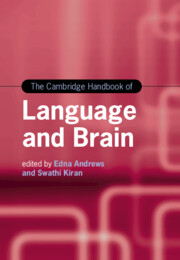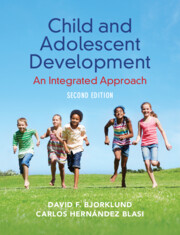Refine listing
Actions for selected content:
1295956 results in Books

Statistics for Chemical Engineers
- From Data to Models to Decisions
- Coming soon
-
- Expected online publication date:
- December 2025
- Print publication:
- 25 September 2025
-
- Textbook
- Export citation

The London Foundling Hospital and Eighteenth-Century Objects of Charity
- Recovering the Digital Archive
- Coming soon
-
- Expected online publication date:
- December 2025
- Print publication:
- 31 January 2026
-
- Element
- Export citation

Anisotropic Seismology
- Coming soon
-
- Expected online publication date:
- December 2025
- Print publication:
- 08 January 2026
-
- Book
- Export citation

Taxing People
- The Next One Hundred Years
- Coming soon
-
- Expected online publication date:
- December 2025
- Print publication:
- 22 January 2026
-
- Book
- Export citation

The Principles of Family Business Law
- Coming soon
-
- Expected online publication date:
- December 2025
- Print publication:
- 08 January 2026
-
- Book
- Export citation

Incentive Bargaining and Corporate Governance
- Comparative Enterprise Law among the US, Japan, and China
- Coming soon
-
- Expected online publication date:
- December 2025
- Print publication:
- 08 January 2026
-
- Book
- Export citation

Parallel Computer Organization and Design
- Coming soon
-
- Expected online publication date:
- December 2025
- Print publication:
- 09 October 2025
-
- Textbook
- Export citation

Onomatopoeia
- The Colorful World of Sounds
- Coming soon
-
- Expected online publication date:
- December 2025
- Print publication:
- 13 November 2025
-
- Book
- Export citation

Marriage and the Moral Imagination
- Coming soon
-
- Expected online publication date:
- December 2025
- Print publication:
- 31 January 2026
-
- Book
- Export citation

Making Medical Progress
- History of a Contested Idea
- Coming soon
-
- Expected online publication date:
- December 2025
- Print publication:
- 20 November 2025
-
- Book
- Export citation

The Cambridge Companion to Matthew Paris
- Coming soon
-
- Expected online publication date:
- December 2025
- Print publication:
- 08 January 2026
-
- Book
- Export citation

New Religious Movements and the Romantic Spirit of Modernity
- Coming soon
-
- Expected online publication date:
- December 2025
- Print publication:
- 31 January 2026
-
- Element
- Export citation

Demystifying the Chinese Economy
- Coming soon
-
- Expected online publication date:
- December 2025
- Print publication:
- 08 January 2026
-
- Book
- Export citation

Wales, Romanticism, and the Making of Imperial Culture
- Coming soon
-
- Expected online publication date:
- December 2025
- Print publication:
- 22 January 2026
-
- Book
- Export citation

A Hundred Flowers
- How Literature Shaped Maoism
- Coming soon
-
- Expected online publication date:
- December 2025
- Print publication:
- 08 January 2026
-
- Book
- Export citation

Truth and Reference in the Making of Fiction
- A View on Fictionality
- Coming soon
-
- Expected online publication date:
- December 2025
- Print publication:
- 22 January 2026
-
- Book
- Export citation

Bilingual Academic Language
- Concepts and Case Studies of Multilingual Education
- Coming soon
-
- Expected online publication date:
- December 2025
- Print publication:
- 16 October 2025
-
- Book
- Export citation

The Cambridge Handbook of Language and Brain
- Coming soon
-
- Expected online publication date:
- December 2025
- Print publication:
- 09 October 2025
-
- Book
- Export citation

Child and Adolescent Development
- An Integrated Approach
- Coming soon
-
- Expected online publication date:
- December 2025
- Print publication:
- 04 December 2025
-
- Textbook
- Export citation
Syntactic Variation from Individuals to Populations
- Language as a Complex System
- Coming soon
-
- Expected online publication date:
- December 2025
- Print publication:
- 31 December 2025
-
- Element
- Export citation
